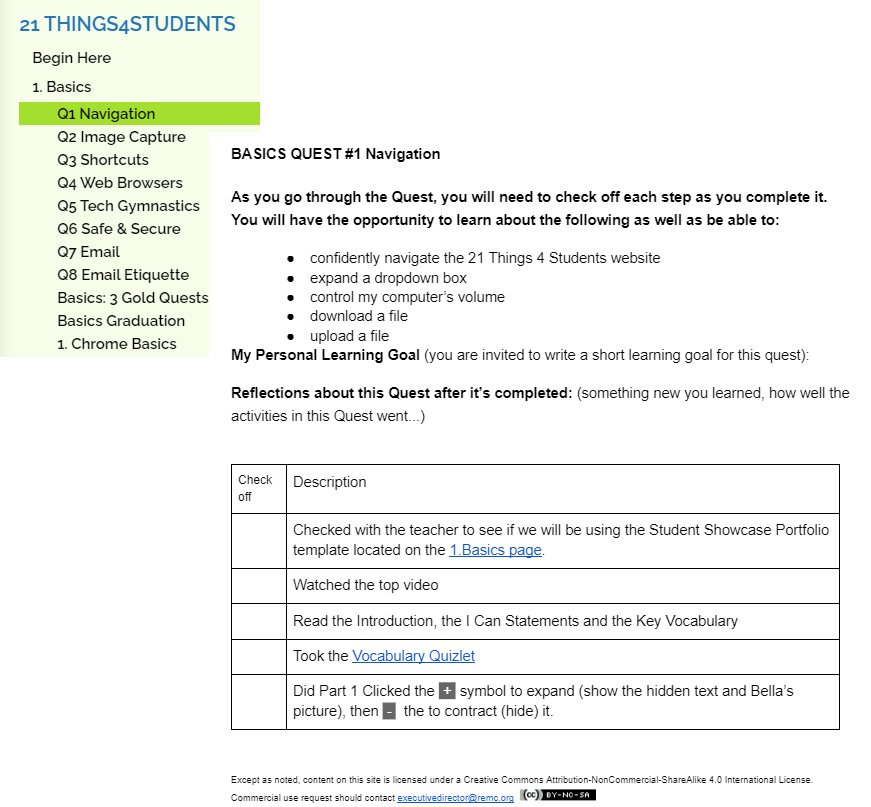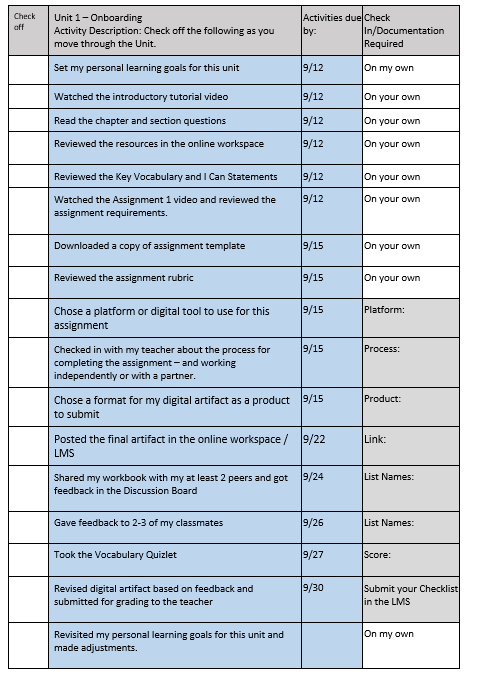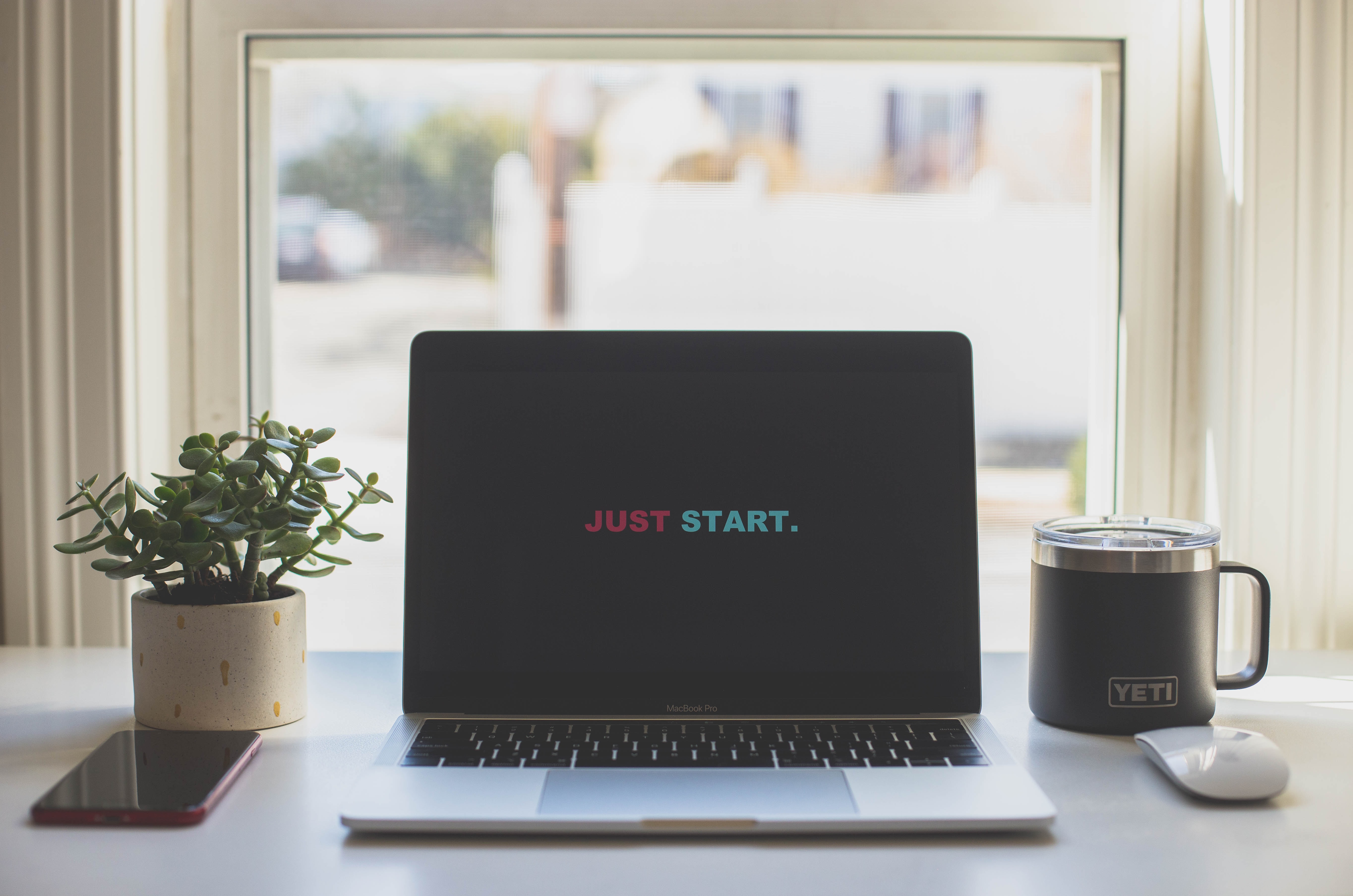Continuing our series with the 10 Strategies for Onboarding Students in Online Learning
9. Monitor Progress
As students move through an onboarding unit, build in some opportunities to check for understanding. These might be structured one-on-one interviews, formative assessments or online surveys, or by monitoring their own work with a checklist to name just a few. With this strategy, we are making sure that students are on track to being successful all year long by grasping the importance of our onboarding activities.
Here are some things to keep in mind:
-Personal Reflection, Goal Setting, and Assessment
-Systems for Progress Monitoring
-Checking for Understanding
Personal Reflection, Goal Setting, and Assessment
Finding out more about students and their goals and interests can provide insight into their performance or passions. Creating a simple Google or Excel Form can provide you with a wealth of information to help direct and re-direct students towards their goals.
Ask questions beyond the yes/no format, inviting students to share their hopes and aspirations such as:
-What do you like to do in your spare time?
-What is your favorite subject and why?
-What are your hobbies and how did you get started?
-Tell me about your family?
-How do you most like to learn?
-What was the last book you read for fun?
-What do you want to be when you grow up?
-Is there anything you need me to know to help me be a better teacher to you?
-What are you most excited about this year?
-What do you hope to learn in this class?
-What is your favorite TV show?
-What is your favorite food?
-How much time do you spend online after school?
-What are your favorite digital tools, websites, or apps?
-Do you have any hopes about this year? fears?
-and etc....
Opening the door with a Personal Interest Survey provides you with a baseline to refer to not only for working with students - but also for Parent Teacher Conferences and beyond. It also opens up opportunities for conversations with students - or revelations about their realities to help you be a better teacher for them.
Systems for Progress Monitoring
With an onboarding unit, oftentimes the unit is self-paced. Giving students deadlines and responsibilities, as well as using checklists for progress monitoring, can help facilitate the process. Checklists and deadlines provide opportunities for students to complete the unit at their own learning rate (within reason). The teacher, in turn, can monitor the checklist for completion - or interview students about the work missing and completed.
The 21things4students project is a great example of an onboarding unit. The website has an overview (Begin Here), and then get started in the Thing called "Basis". Within Basics, there are several Quests (or activities) that students move through to get up to speed. These Quests have checklists, interactive learning experiences, and formative assessments to name just a few.

In the figure above, you see the onboarding resources of the 21thing4students website. The "Thing" called "Basics" has several Quests (or learning activities) like learning to navigate, be safe online, or use devices and browsers. The Quests are guided by checklists.
Checking for Understanding
Using a checklist provides an opportunity for the student and teacher to talk one-on-one about progress. Here, the teacher has an opportunity to debrief any questions, comments, or concerns that the student has - as well as monitor deadlines and responsibilities.
In the example below, the checklist has included columns with deadlines, checkins, and/or the required documentation. This might be where the teacher looks for initials to confirm progress.

In the figure above, students move through the sequence of activities to complete the unit.
Consider revisiting the Personal Interest Surveys you might have administered to have a one-on-one with the student about their personal learning goals, or their performance on some of the basic skills assessments. Here, you are setting the student up for success.
Progress monitoring goes beyond the onboarding unit. This strategy will creep into your school year where you will do more than check for understanding - you will check in on the human side of your students by engaging them in conversations about their lives, aspirations, goals, and responsibilities. You will note that the sample above includes a place for students to set personal learning goals as well as post-reflect about their progress.
Before you move ahead, jot down a few of your own ideas about progress monitoring, formative assessments, and goal setting and reflection with students.
Click on NEXT to move on to Strategy 9 - Monitor Progress



